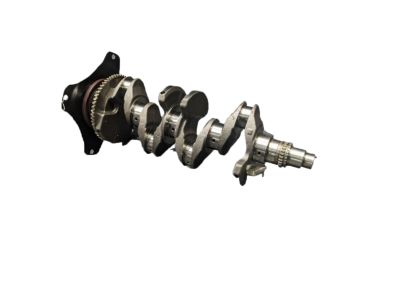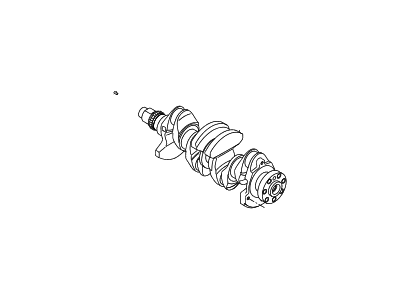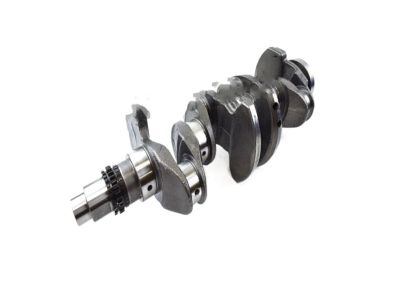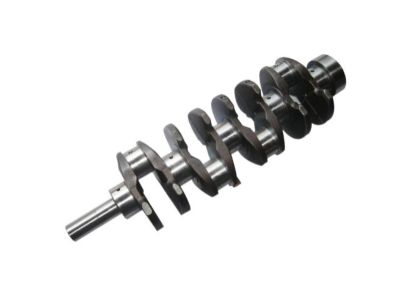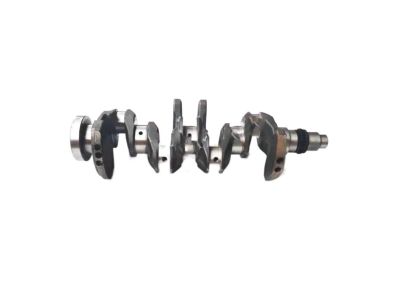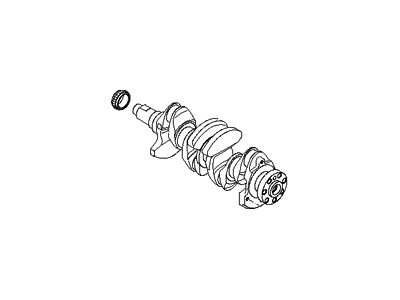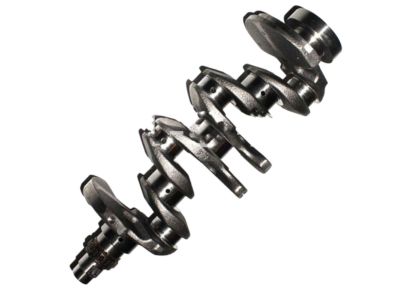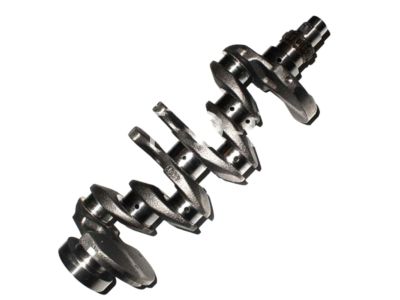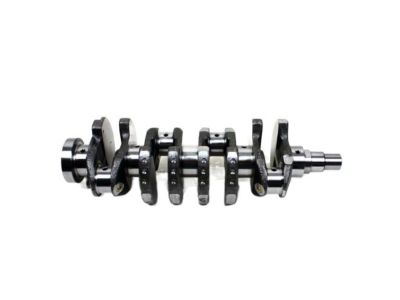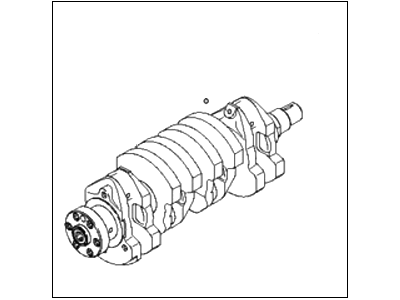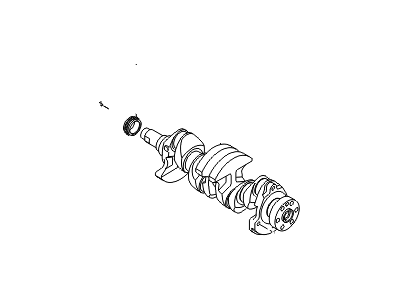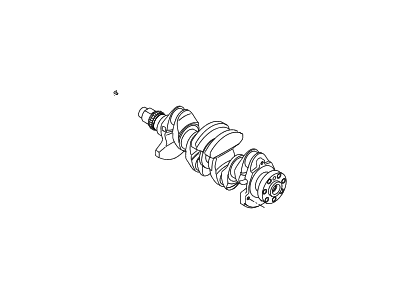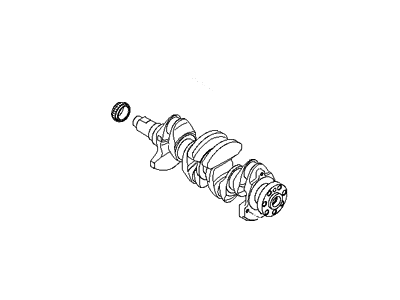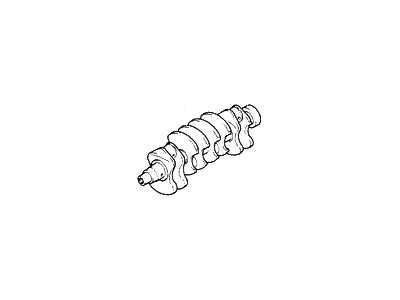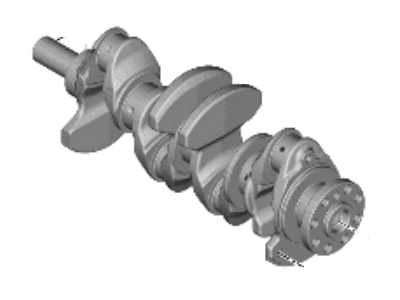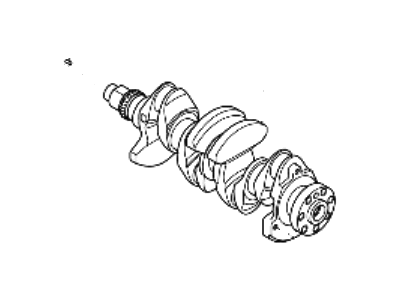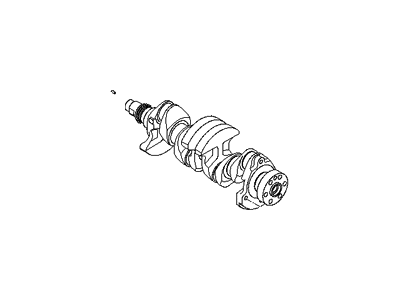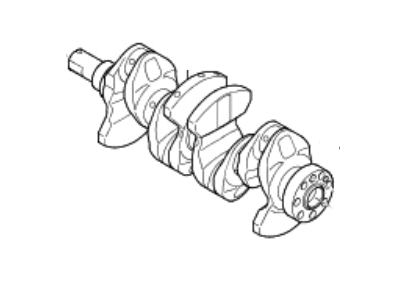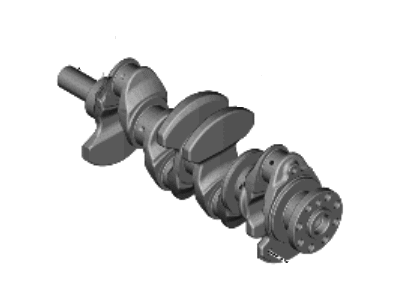×
- Hello
- Login or Register
- Quick Links
- Live Chat
- Track Order
- Parts Availability
- RMA
- Help Center
- Contact Us
- Shop for
- Hyundai Parts
- Hyundai Accessories


My Garage
My Account
Cart
Genuine Hyundai Elantra Crankshaft
Crank Shaft- Select Vehicle by Model
- Select Vehicle by VIN
Select Vehicle by Model
orMake
Model
Year
Select Vehicle by VIN
For the most accurate results, select vehicle by your VIN (Vehicle Identification Number).
38 Crankshafts found

Hyundai Elantra Crankshaft Assembly
Part Number: 23110-2E510$578.01 MSRP: $819.23You Save: $241.22 (30%)Ships in 1-3 Business Days
Hyundai Elantra Crankshaft Assembly
Part Number: 23110-2E201$595.94 MSRP: $844.63You Save: $248.69 (30%)Ships in 1-3 Business Days
Hyundai Elantra Crankshaft Assembly
Part Number: 23110-2E501$595.94 MSRP: $844.63You Save: $248.69 (30%)Ships in 1-3 Business Days
Hyundai Elantra Crankshaft Assembly
Part Number: 23110-23710$804.77 MSRP: $1150.73You Save: $345.96 (31%)Ships in 1-3 Business DaysHyundai Elantra Crankshaft Assembly
Part Number: 23110-2B710$1025.18 MSRP: $1465.89You Save: $440.71 (31%)Ships in 1-3 Business DaysHyundai Elantra Crankshaft Assembly
Part Number: 23110-2E801$961.97 MSRP: $1375.50You Save: $413.53 (31%)Ships in 1-2 Business DaysHyundai Elantra Crankshaft Assembly
Part Number: 23110-2E700$680.79 MSRP: $973.45You Save: $292.66 (31%)Ships in 1-3 Business DaysHyundai Elantra Crankshaft Assembly
Part Number: 23110-23510$624.55 MSRP: $885.18You Save: $260.63 (30%)Ships in 1-3 Business DaysHyundai Elantra Crankshaft
Part Number: 23111-2M002$666.45 MSRP: $944.56You Save: $278.11 (30%)Ships in 1-3 Business DaysHyundai Elantra Crankshaft Assembly
Part Number: 90ZN6-2EX00$961.97 MSRP: $1375.50You Save: $413.53 (31%)Ships in 1-3 Business DaysHyundai Elantra Crankshaft Assembly
Part Number: 6D016-2EU00$756.92 MSRP: $1082.31You Save: $325.39 (31%)Ships in 1-3 Business DaysHyundai Elantra Crankshaft Assembly
Part Number: 23110-2E100$578.01 MSRP: $819.23You Save: $241.22 (30%)Ships in 1-3 Business DaysHyundai Elantra Crankshaft Assembly
Part Number: 23110-2E101$578.01 MSRP: $819.23You Save: $241.22 (30%)Ships in 1-3 Business DaysHyundai Elantra Crankshaft Assembly
Part Number: 23110-2E200$578.01 MSRP: $819.23You Save: $241.22 (30%)Ships in 1-3 Business DaysHyundai Elantra Crankshaft Assembly
Part Number: 6D056-2EU00$595.94 MSRP: $844.63You Save: $248.69 (30%)Ships in 1-3 Business DaysHyundai Elantra Crankshaft Assembly
Part Number: 6D046-2EU00$757.54 MSRP: $1083.19You Save: $325.65 (31%)Ships in 1-3 Business DaysHyundai Elantra Crankshaft Assembly
Part Number: 23110-2E711$757.67 MSRP: $1083.37You Save: $325.70 (31%)Ships in 1-3 Business DaysHyundai Elantra Crankshaft Assembly
Part Number: 23110-03HA0$1018.47 MSRP: $1456.29You Save: $437.82 (31%)Ships in 1-3 Business DaysHyundai Elantra Crankshaft
Part Number: 23111-2J002$1076.27 MSRP: $1538.94You Save: $462.67 (31%)Ships in 1-3 Business DaysHyundai Elantra Crankshaft Assembly
Part Number: 23110-2E401$546.97 MSRP: $775.22You Save: $228.25 (30%)
| Page 1 of 2 |Next >
1-20 of 38 Results
Hyundai Elantra Crankshaft
If you are looking for affordable high-quality OEM Hyundai Elantra Crankshaft, then you have come to the prime place. Our website provides a large amount of genuine Hyundai Elantra Crankshaft at unbeatable prices. All our parts come backed with the manufacturer's warranty.
Hyundai Elantra Crankshaft Parts Questions & Experts Answers
- Q: How is the crankshaft removed on Hyundai Elantra?A:The crankshaft can only be removed after the engine has been taken out of the vehicle, assuming that the flywheel/driveplate, timing belt, oil pan, oil pump, front and rear oil seal housings, and Piston/connecting rod assemblies have been detached. For 2011 and later 1.8L and all 2014 and later 2.0L engines, a one-piece main bearing cap assembly known as the lower crankcase is utilized instead of individual main bearing caps, while 1.4L and 1.6L engines require the removal of a ladder frame or lower crankcase to access the main bearing caps. Before removing the crankshaft, check the endplay using a dial indicator or feeler gauges to measure the clearance between the crankshaft and thrust main bearing. Ensure the crankshaft sensor wheel and Crankshaft Position (CKP) sensor have the proper clearance, tightening the CKP sensor bolt if necessary. For 2010 and earlier 1.8L and 2012 and earlier 2.0L engines, verify that the main bearing caps are marked for their locations, loosening the bolts gradually for removal. Gently tap the caps with a soft-face hammer to separate them from the engine block, using bolts as levers if needed. For 1.4L and 1.6L engines, remove the ladder frame mounting bolts and check for markings on the main bearing caps, loosening the bolts for removal. Carefully lift the crankshaft straight out of the engine, ensuring not to damage the reluctor ring for the crankshaft position sensor, and return the bearing inserts and caps to their respective locations, tightening the bolts finger tight.
Related Hyundai Elantra Parts
Browse by Year
2023 Crankshaft 2022 Crankshaft 2021 Crankshaft 2020 Crankshaft 2019 Crankshaft 2018 Crankshaft 2017 Crankshaft 2016 Crankshaft 2015 Crankshaft 2014 Crankshaft 2013 Crankshaft 2012 Crankshaft 2011 Crankshaft 2010 Crankshaft 2009 Crankshaft 2008 Crankshaft 2007 Crankshaft 2006 Crankshaft 2005 Crankshaft 2004 Crankshaft 2003 Crankshaft 2002 Crankshaft 2001 Crankshaft 2000 Crankshaft 1999 Crankshaft 1998 Crankshaft 1997 Crankshaft 1996 Crankshaft 1995 Crankshaft 1994 Crankshaft 1993 Crankshaft 1992 Crankshaft 1991 Crankshaft
